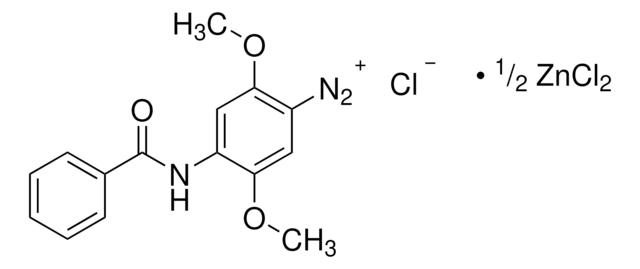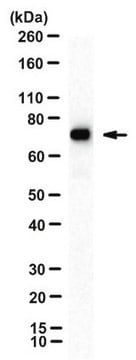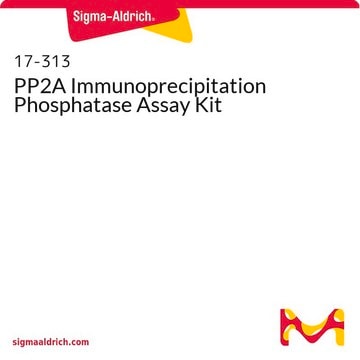17-128
Zestaw do oznaczania fosfatazy alkalicznej/kwaśnej (R-R-A-pS-V-A)
Alkaline/Acid Phosphatase Assay Kit is routinely used to detect phosphatase activity by either dephosphorylation of the phosphopeptide (RRApSVA) or hydrolysis of pNPP.
Wybierz wielkość
2590,00 zł
Przewidywany termin wysyłki28 kwietnia 2025Szczegóły
Wybierz wielkość
About This Item
2590,00 zł
Przewidywany termin wysyłki28 kwietnia 2025Szczegóły
Polecane produkty
Poziom jakości
producent / nazwa handlowa
Upstate®
metody
activity assay: suitable (phosphatase)
metoda wykrywania
colorimetric
Warunki transportu
wet ice
Zastosowanie
Opakowanie
Komponenty
Malachite Green Additive (Cat.# 20-104)
Phosphate Standard (Cat.# 20-103)
Serine Phosphopeptide (RRApSVA) (Cat.# 12-220)
pNPP (p-Nitrophenyl Phosphate) (Cat.# 20-106)
NiCl2, 40mM (Cat.# 20-178)
pNPP Ser/Thr Assay Buffer (Cat.# 20-179)
96-well microtiter plate
Jakość
Informacje prawne
Oświadczenie o zrzeczeniu się odpowiedzialności
Hasło ostrzegawcze
Danger
Zwroty wskazujące rodzaj zagrożenia
Zwroty wskazujące środki ostrożności
Klasyfikacja zagrożeń
Aquatic Chronic 3 - Carc. 1A Inhalation - Met. Corr. 1 - Repr. 1B - Skin Sens. 1 - STOT RE 2
Organy docelowe
Lungs
Kod klasy składowania
6.1D - Non-combustible acute toxic Cat.3 / toxic hazardous materials or hazardous materials causing chronic effects
Klasa zagrożenia wodnego (WGK)
WGK 3
Certyfikaty analizy (CoA)
Poszukaj Certyfikaty analizy (CoA), wpisując numer partii/serii produktów. Numery serii i partii można znaleźć na etykiecie produktu po słowach „seria” lub „partia”.
Masz już ten produkt?
Dokumenty związane z niedawno zakupionymi produktami zostały zamieszczone w Bibliotece dokumentów.
Klienci oglądali również te produkty
Active Filters
Nasz zespół naukowców ma doświadczenie we wszystkich obszarach badań, w tym w naukach przyrodniczych, materiałoznawstwie, syntezie chemicznej, chromatografii, analityce i wielu innych dziedzinach.
Skontaktuj się z zespołem ds. pomocy technicznej













